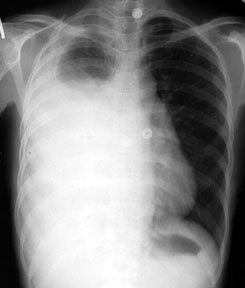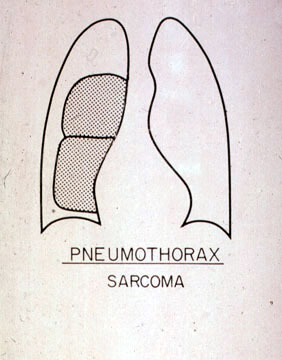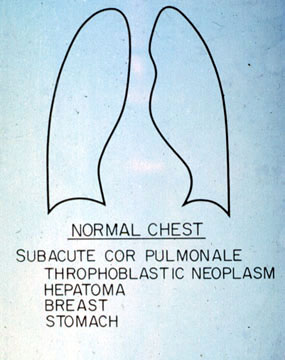
Significant pleural masses can exist without recognition (as in the adjoining CXR), even in the absence of pleural effusion.
Iatrogenic pneumothorax
facilitates visualization of pleural masses.
CT scan can reveal pleural masses that are not seen on routine x-rays.
Thymoma, multiple myeloma and cystadenocarcinoma lung are reported
to give such a metastatic pattern.

